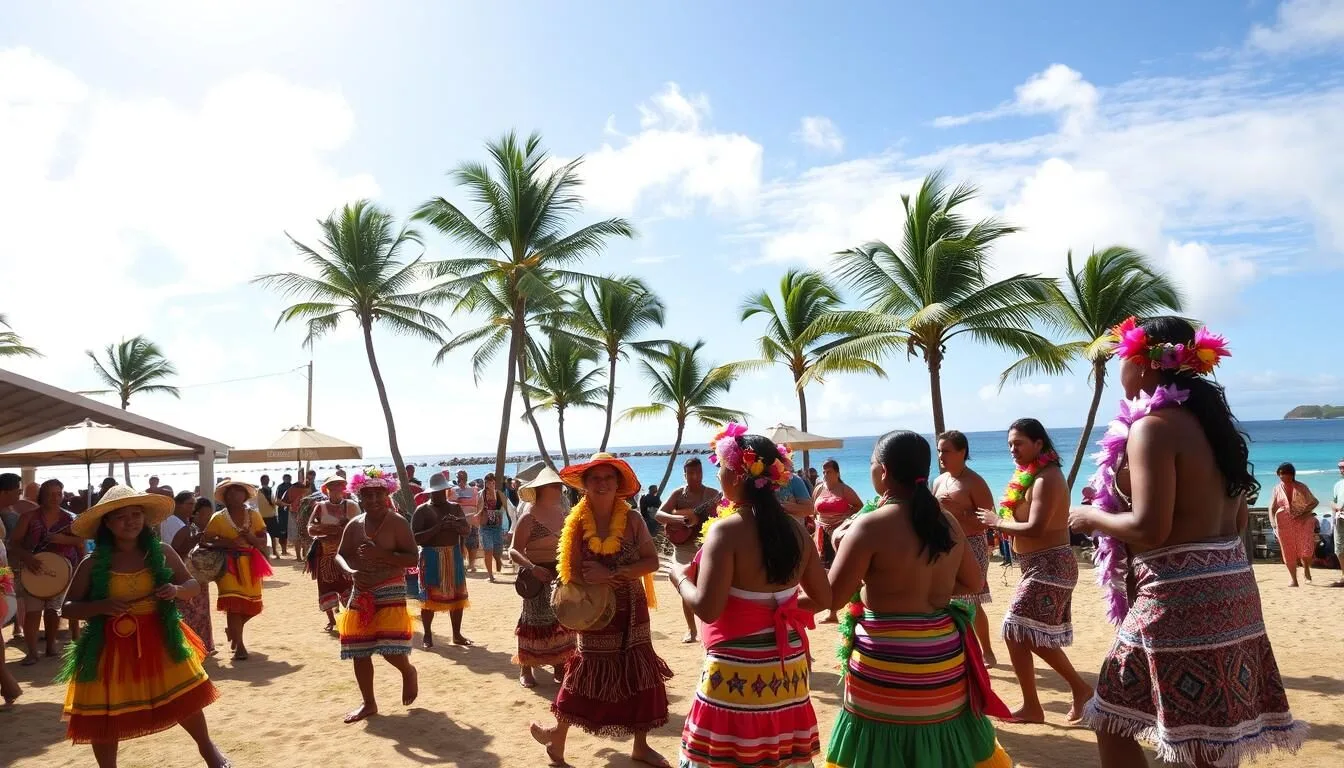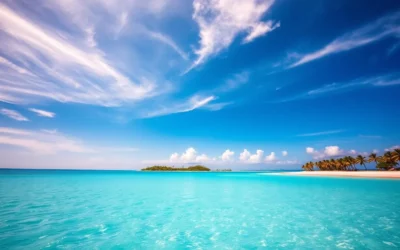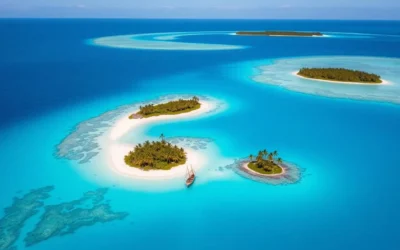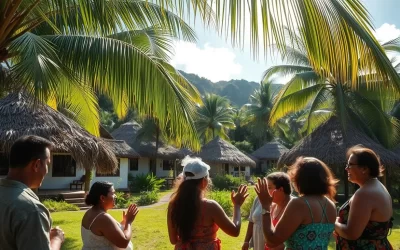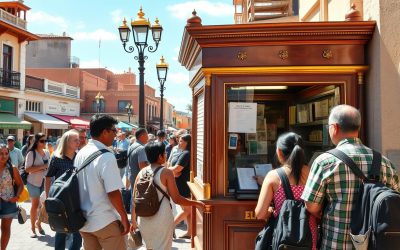✓ Accommodations✓ Flights✓ Rental Cars
Imagine attending a festival in a remote Pacific island territory with a population of just 1,500 residents. Tokelau, a territory of New Zealand, offers a unique cultural experience with its vibrant festivals that showcase the rich heritage and traditions of this tropical paradise.
As you immerse yourself in the local culture, you’ll witness traditional music, dance, crafts, and communal feasts that reflect the islands’ Polynesian roots and modern influences. With its pristine coral reefs and genuine island hospitality, Tokelau is an ideal destination for visitors seeking an authentic experience of island life.
Discovering Tokelau’s Cultural Heritage
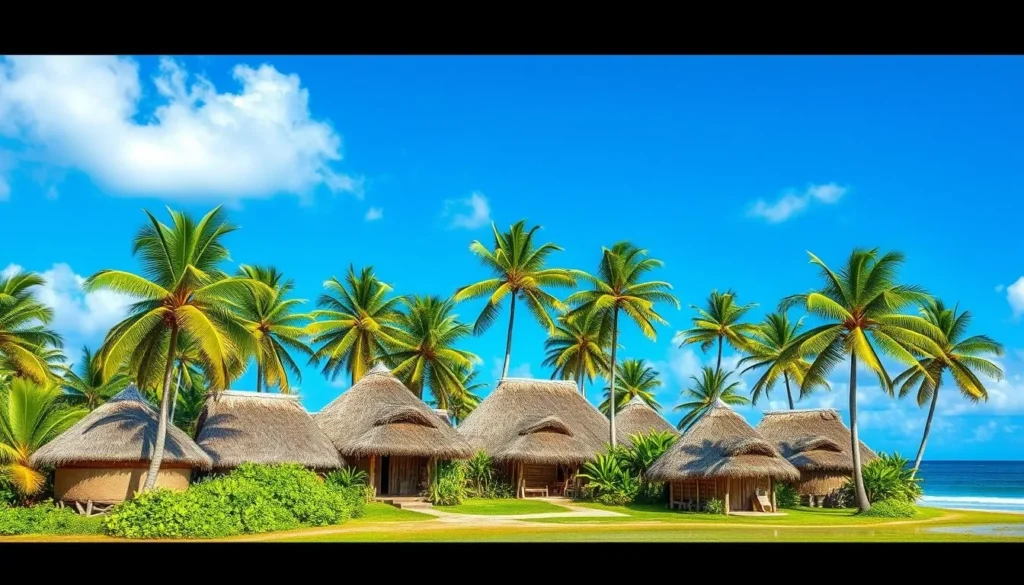
Tokelau, a hidden gem in the Pacific Ocean, boasts a unique cultural identity shaped by its history and isolation. As a non-self-governing territory of New Zealand, Tokelau consists of three tropical coral atolls: Atafu, Nukunonu, and Fakaofo.
Where is Tokelau Located?
Tokelau is situated in the South Pacific Ocean, approximately halfway between Hawaii and New Zealand. This remote location has contributed to the preservation of its distinct cultural heritage.
The Unique Tokelauan Culture
The Tokelauan culture represents one of the most preserved forms of Polynesian traditions in the Pacific. The islands’ isolation and limited outside influence have maintained the authenticity of their customs and way of life.
The Importance of Festivals in Tokelau
Festivals in Tokelau play a vital role in preserving cultural heritage, strengthening community bonds, and celebrating historical milestones. These cultural celebrations offer visitors a rare opportunity to witness authentic Polynesian customs and traditions.
Understanding Tokelau’s location and cultural context is essential for appreciating the significance of its festivals and their role in maintaining the islands’ unique identity.
Waitangi Day: Tokelau’s Celebration of Unity
As you explore Tokelau’s vibrant culture, you’ll discover the significance of Waitangi Day, a celebration that highlights the territory’s unity and connection to New Zealand. This day is not just a commemoration; it’s a vibrant expression of Tokelauan heritage and community spirit.
The History and Significance of Waitangi Day
Waitangi Day, celebrated on February 6th, commemorates the signing of the Treaty of Waitangi between the British Crown and Māori chiefs in 1840. For Tokelau, this day is a celebration of unity, highlighting the close bonds within Tokelauan communities and their ties to New Zealand. It’s a day to honor their cultural heritage and the traditions that define their identity.
Traditional Festivities and Ceremonies
The day typically begins with formal ceremonies that honor both Tokelauan traditions and the connection to New Zealand. Community leaders deliver speeches about unity and cultural preservation, setting the tone for a day filled with respect and celebration. These ceremonies are a testament to the community’s commitment to preserving their customs and heritage.
Music, Dance, and Feasts
Dances like the fatele, Tokelau’s signature rhythmic dance, are central to the celebrations, showcasing stories of island life through expressive movements and powerful choral singing. The communal feasts feature traditional seafood dishes and coconut-based recipes, including palusami, bringing everyone together to share food prepared according to time-honored methods. These performances and feasts embody the spirit of unity and community that defines Waitangi Day in Tokelau.
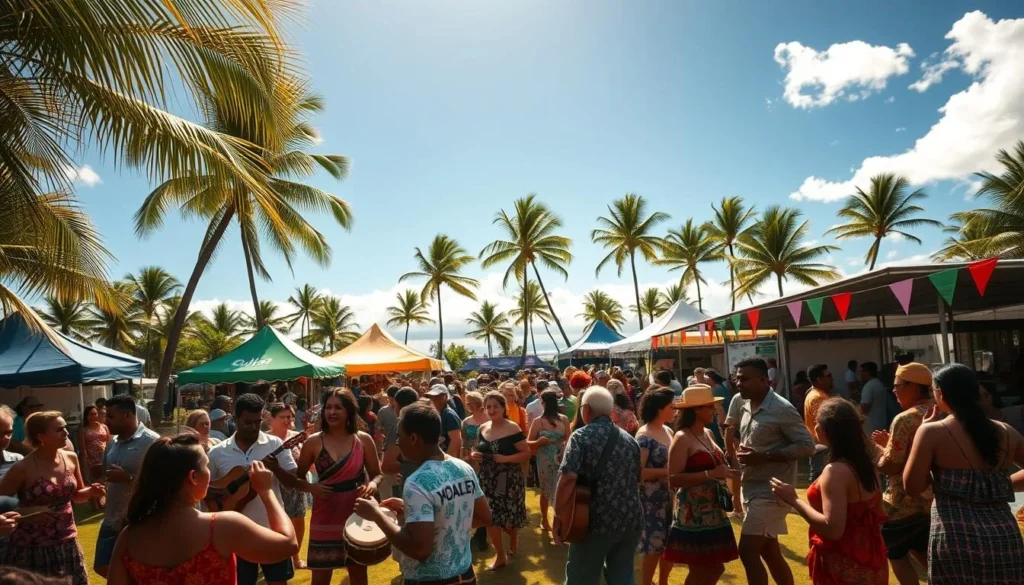
Tokelau Language Week: Preserving Cultural Identity
The Tokelau Language Week is a vital initiative that aims to preserve the Tokelauan language, spoken by nearly 94% of the population. This week-long celebration, typically observed in October, is a significant cultural event that promotes the unique culture and language of the islands. As part of New Zealand’s Pacific language weeks program, it has evolved into a crucial cultural celebration both in Tokelau and among Tokelauan communities in New Zealand.
Origins and Purpose
The Tokelau Language Week originated as a means to preserve and promote the Tokelauan language. Its primary purpose is to ensure that the language continues to thrive among the younger generations. By hosting special educational programs, the event teaches traditional songs, stories, and expressions, thus maintaining the linguistic heritage.
Community Activities
During Language Week, schools and community centers host various activities, including language competitions, storytelling sessions by elders, and traditional craft demonstrations with Tokelauan terminology. These events showcase the connection between language and cultural identity, providing a unique experience for both locals and visitors. You can participate in these community activities and gain a deeper understanding of Tokelauan culture.
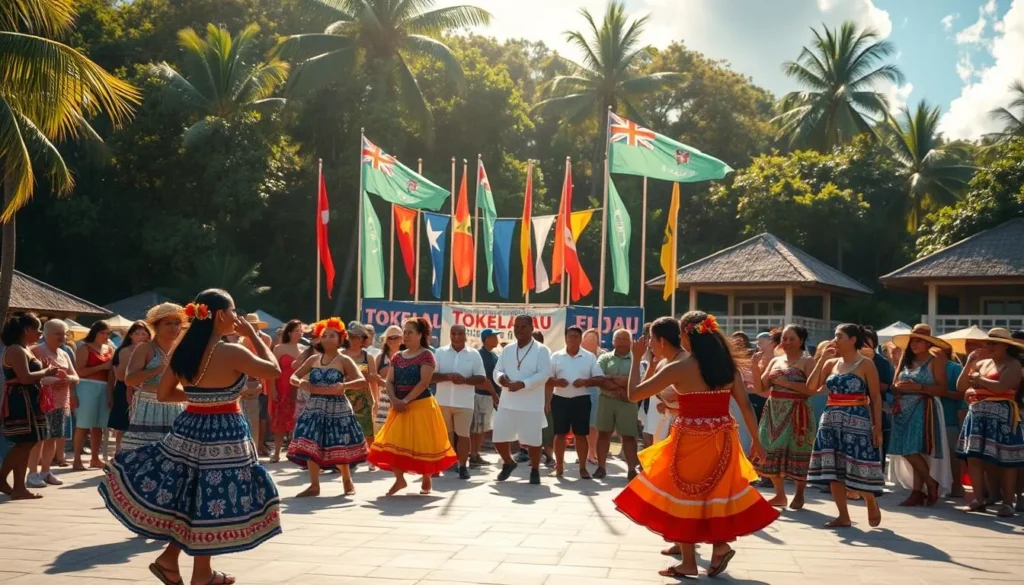
Participating as a Visitor
As a visitor, you are warmly encouraged to participate in Tokelau Language Week. You can learn basic Tokelauan phrases, attend public language workshops, and engage with community events. By doing so, you’ll not only enhance your experience but also contribute to the preservation of Tokelau’s cultural identity. This is a unique opportunity to immerse yourself in the local culture and create lasting memories.
By participating in Tokelau Language Week, you’ll gain a deeper appreciation for the islands’ rich cultural heritage and the importance of language preservation in maintaining cultural identity. The event is a testament to the community’s commitment to preserving their unique culture in a time of increasing global influences.
The Vibrant Tokelau Arts Festival
Immerse yourself in the colorful world of Tokelauan arts at the annual Tokelau Arts Festival. This vibrant celebration, typically held in August, rotates between the three atolls of Atafu, Nukunonu, and Fakaofo, showcasing the rich cultural heritage of Tokelau.
Showcasing Traditional Crafts and Artwork
The festival is a treasure trove of traditional crafts, including intricate weaving using pandanus leaves and coconut fiber crafts. Artisans demonstrate centuries-old techniques, offering visitors the opportunity to witness the creation of traditional fishing tools and household items. You can also purchase authentic handmade souvenirs, supporting the local community and taking a piece of Tokelauan culture home.
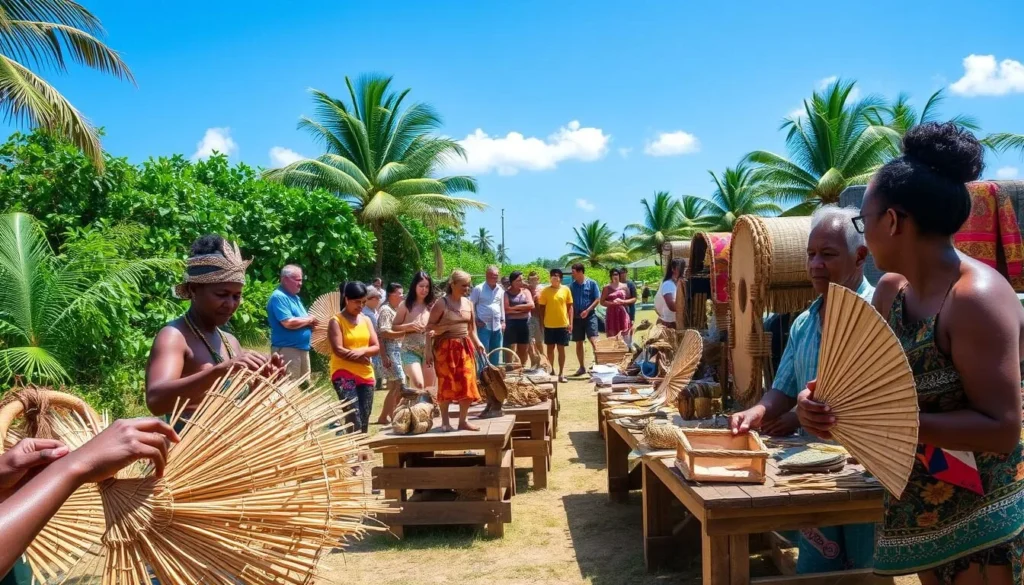
Performance Arts and Exhibitions
Performance arts take center stage during the festival, featuring traditional dances like the energetic fatele and storytelling through movement. Musical performances using both traditional and contemporary instruments add to the festive atmosphere. The event creates a unique immersive experience where the boundaries between performers and audience often blur.
When and Where to Experience the Arts Festival
The Tokelau Arts Festival is an annual event that coincides with favorable weather conditions, making it an ideal time to experience both the cultural events and the natural beauty of the islands. By attending, you’ll gain a deeper understanding of Tokelauan customs and traditions, enriching your visit to these Pacific islands.
Tokelau Music Festival: Rhythms of the Pacific
The Tokelau Music Festival showcases the islands’ cultural identity through music and dance. This vibrant event is a celebration of the rich musical traditions that are integral to Tokelauan culture and community.
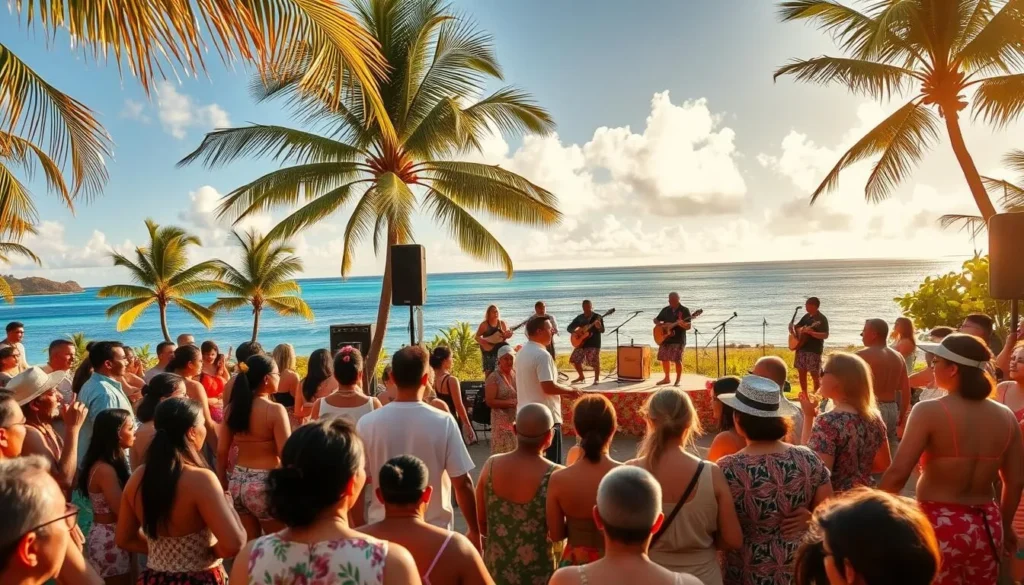
Traditional and Contemporary Tokelauan Music
Tokelauan music is characterized by traditional songs known as pehe and ancient songs called pehe anamua. The Tokelau Music Festival features a mix of these traditional songs and contemporary compositions, reflecting the evolving cultural identity of the Tokelauan people.
- The festival celebrates the islands’ rich musical heritage, featuring performances by artists of all ages.
- Traditional instruments made from local materials are showcased alongside modern adaptations, creating a unique fusion.
The Fatele: Tokelau’s Signature Dance
The fatele is Tokelau’s signature dance-music performance, combining rhythmic movements, expressive hand gestures, and communal singing. It tells stories of island life, historical events, and natural phenomena, making it a vital part of Tokelauan cultural heritage.
Festival Highlights and Schedule
The festival schedule includes daytime performances by children and youth groups, evening concerts featuring master musicians, and special themed performances. Visitors have the opportunity to participate in dance workshops and communal singing, creating an immersive experience.
By attending the Tokelau Music Festival, you can witness firsthand the importance of music in Tokelauan society and enjoy the vibrant culture of the islands.
Tokelau: Top Festivals to Check Out When Visiting Throughout the Year
Tokelau’s festivals are a window into the islands’ rich cultural identity, with events happening year-round. As you plan your visit, you’ll find that each festival offers a unique glimpse into the community’s traditions and way of life.
Seasonal Celebrations and Community Events
Tokelau offers a variety of seasonal celebrations throughout the year, reflecting the islands’ deep connection to natural cycles and community life. You can experience harvest festivals that celebrate the bounty of both land and sea, with special emphasis on coconut harvesting ceremonies and first-fish celebrations that honor the waters surrounding the atolls.
The three atolls of Tokelau each maintain their own community events calendar, with village-specific celebrations that honor local history and founding families. New Year celebrations blend traditional Tokelauan customs with influences from New Zealand, creating a unique hybrid celebration.
Religious Festivals and Observances
Religious festivals form an important part of Tokelauan cultural life, with the majority of the population practicing Christianity. You can experience Easter and Christmas celebrations featuring unique local traditions, such as special church services and community feasts with traditional dishes.
White Sunday (Lotu Tamaiti) is particularly significant, honoring children with special church services where they perform biblical recitations, songs, and dances. Visitors should approach these religious festivals with respect for local customs, including modest dress when attending church services.
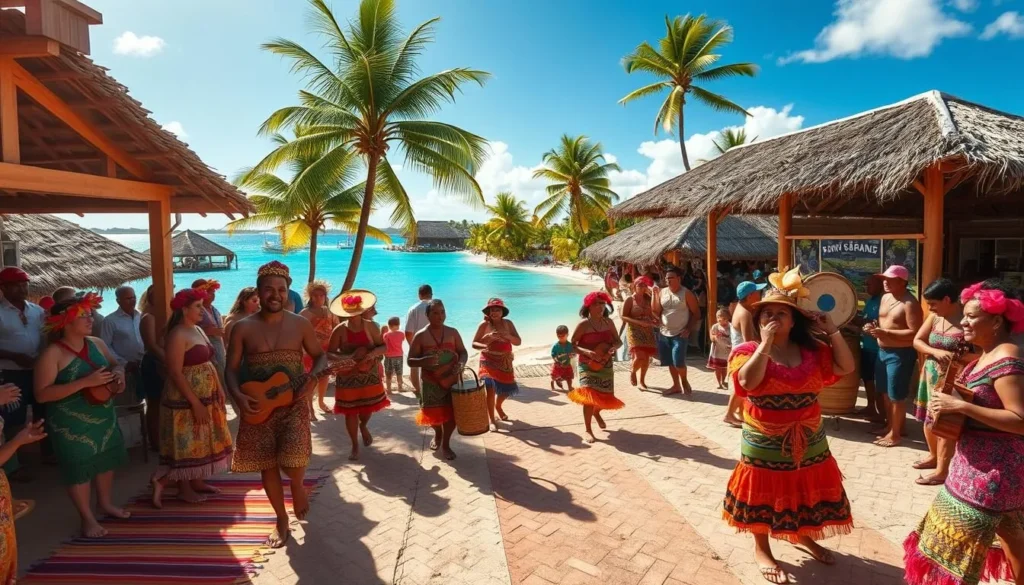
Planning Your Visit to Experience Tokelau’s Festivals
Tokelau’s unique festivals are a must-see, but getting there is an adventure. To make the most of your visit, careful planning is crucial, from arranging travel to respecting local customs.
Travel Tips and Logistics
Traveling to Tokelau involves a journey from New Zealand to Samoa, a flight of approximately 4-5 hours, followed by a 24-30 hour boat ride on the MV Mataliki, which operates fortnightly. Be prepared for potential seasickness and changes in schedules due to weather conditions.
Accommodation Options
Accommodation in Tokelau is limited to basic guesthouses and homestays, offering a genuine local experience. Staying with local families not only provides cultural insights but also enriches your visit.
Cultural Etiquette for Festival Attendance
When attending festivals, respect local customs by dressing modestly, asking permission before taking photographs, and removing shoes when entering homes or community buildings. Protecting the pristine marine life is also crucial; use reef-safe sunscreen and be mindful of your surroundings.
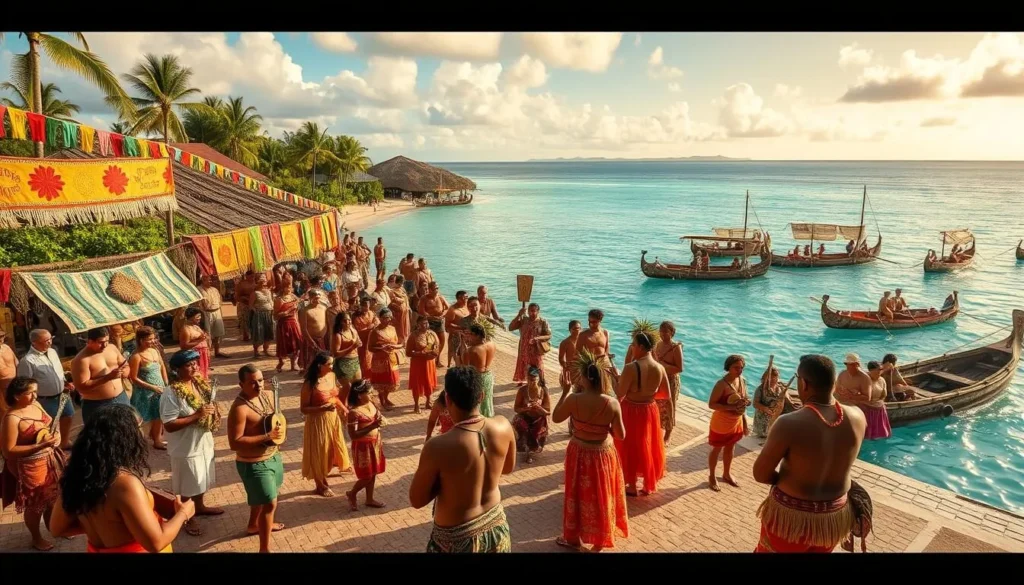
Conclusion
Tokelau’s festivals offer a rare opportunity to experience the rich cultural heritage of this remote island community. By attending these events, you’ll gain insight into the unique traditions and community spirit that define life in Tokelau. The islands’ history and cultural identity are preserved through vibrant dance and music performances. As a New Zealand territory, Tokelau balances its unique culture with sustainable practices, making it a fascinating destination. Visitors can enjoy traditional seafood dishes prepared with coconut while respecting local customs.
The above is subject to change.
Check back often to TRAVEL.COM for the latest travel tips and deals.
